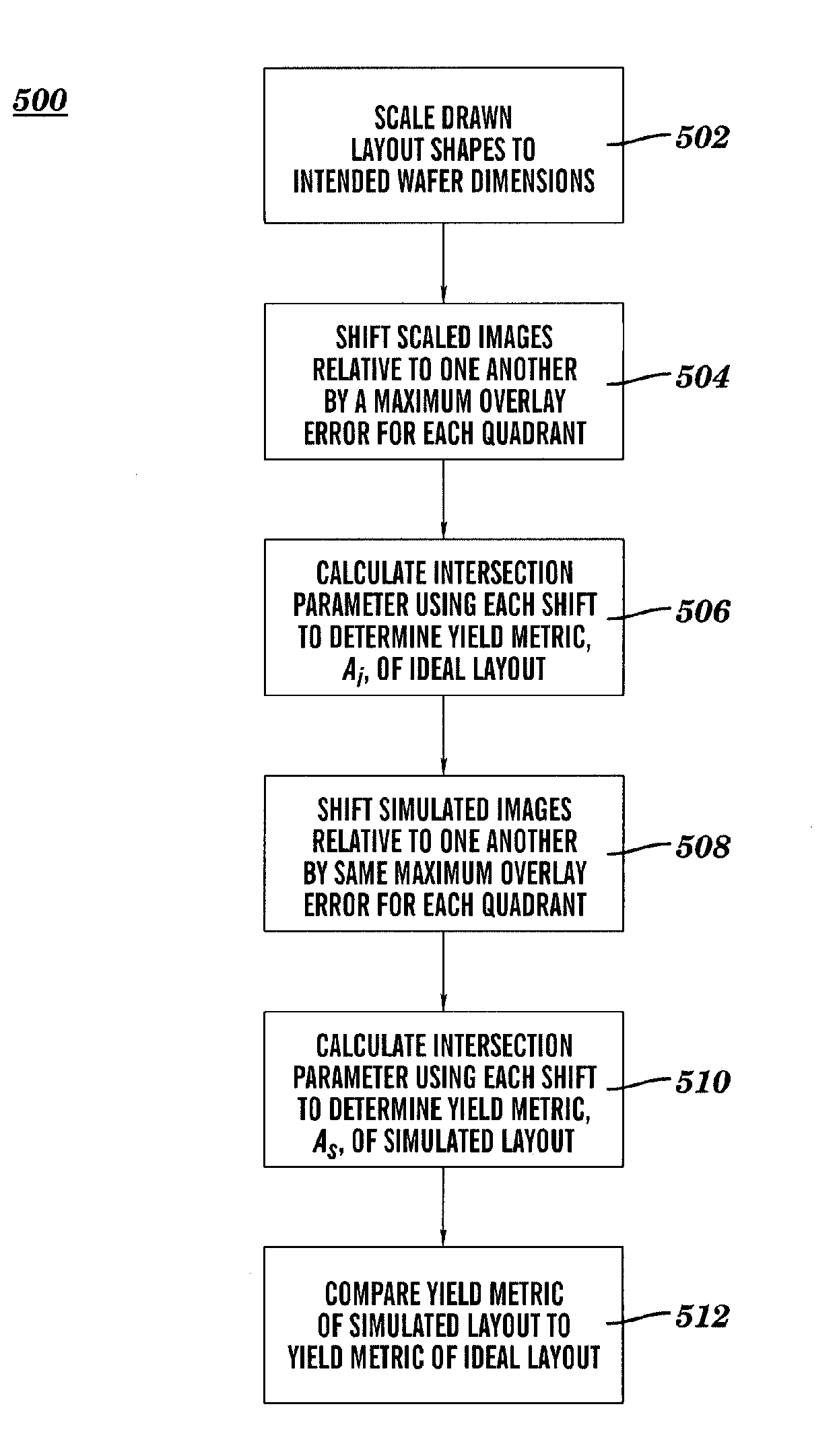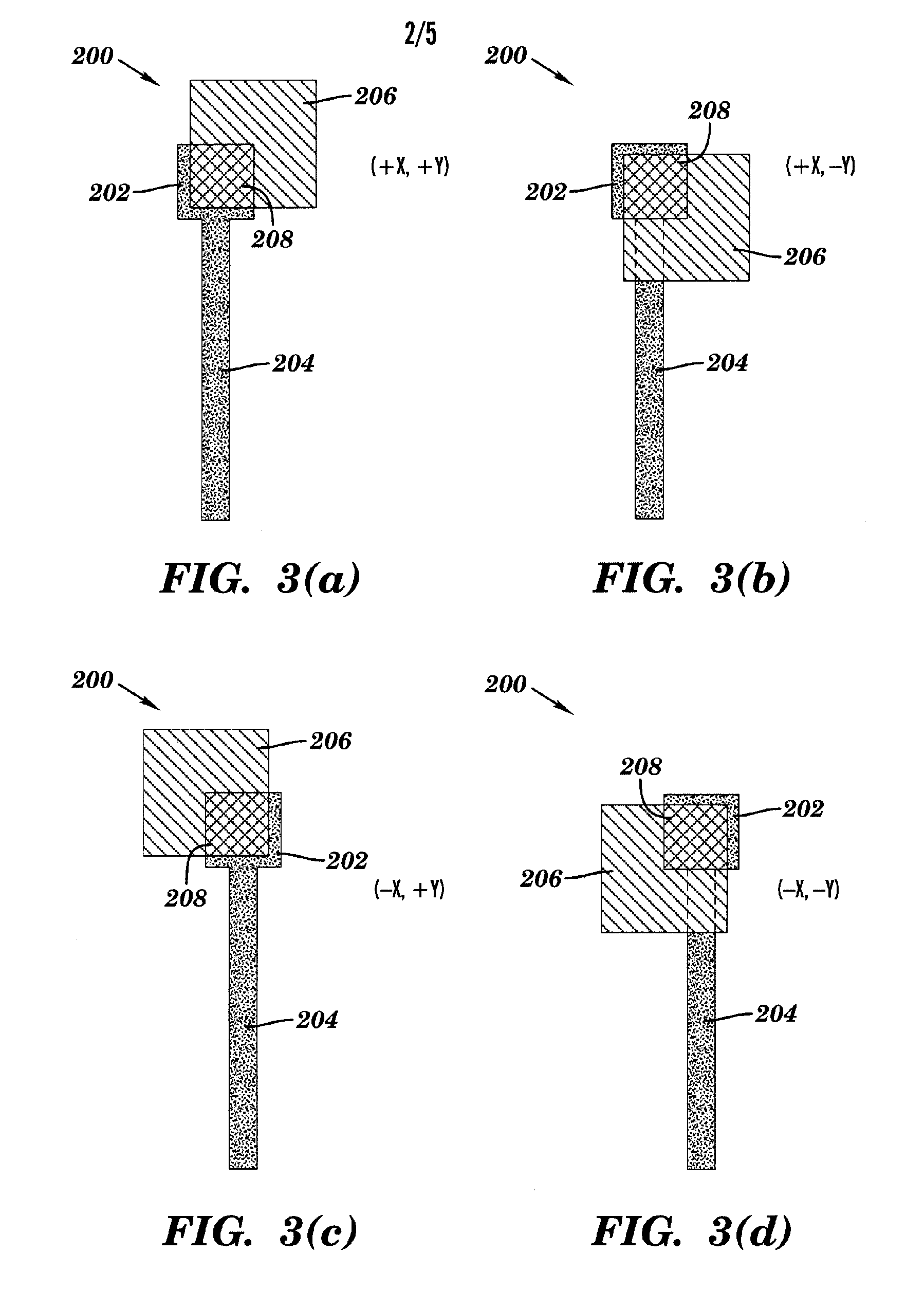Method for verification of resolution enhancement techniques and optical proximity correction in lithography
a resolution enhancement and optical proximity correction technology, applied in the field of semiconductor device manufacturing, can solve the problems of prone to failure, failure to meet the requirements of the overall operation of the integrated circuit, and the limitation of the minimum feature size that can be accurately produced on the substra
- Summary
- Abstract
- Description
- Claims
- Application Information
AI Technical Summary
Benefits of technology
Problems solved by technology
Method used
Image
Examples
Embodiment Construction
[0020]Referring initially to FIG. 1(a), there is shown a portion of an exemplary integrated circuit layout 100 featuring a poly-conductor (PC) 102 (depicted in solid) and associated conductive trace 104, along with a contact area (CA) 106 (depicted in diagonal cross hatching) for landing a connection to an upper wiring level with respect to the PC. As indicated above, when a photolithography system attempts to print circuit elements having sizes near the wavelength of the exposing radiation, the resulting shapes of the printed circuit elements become significantly different from the corresponding pattern on the mask. Accordingly, simulated wafer images of RET and OPC enhanced layout shapes have been used in an attempt to provide qualitative insight into the patterning of certain layout shapes. FIG. 1(b) thus illustrates an exemplary view of one possible simulated wafer image 110 of the design layout 100 of FIG. 1(a). As will be noted, the simulated wafer image 110 depicts the distor...
PUM
 Login to View More
Login to View More Abstract
Description
Claims
Application Information
 Login to View More
Login to View More - R&D
- Intellectual Property
- Life Sciences
- Materials
- Tech Scout
- Unparalleled Data Quality
- Higher Quality Content
- 60% Fewer Hallucinations
Browse by: Latest US Patents, China's latest patents, Technical Efficacy Thesaurus, Application Domain, Technology Topic, Popular Technical Reports.
© 2025 PatSnap. All rights reserved.Legal|Privacy policy|Modern Slavery Act Transparency Statement|Sitemap|About US| Contact US: help@patsnap.com



